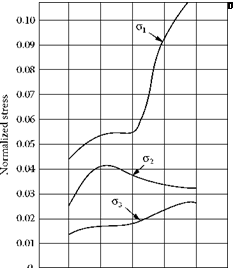Wheel manufacture of a high-speed segmented wheel consists of epoxy bonding or cementing a ring of vitrified CBN segments to steel core as shown in Figure 4.6.
The segmented design serves several purposes. First, it produces a much more consistent product than a continuous or monolithic structure because of the limited movements required in pressing segments of such small volume. This is especially true when, as in the examples shown above, a conventional backing (white) layer is added behind the CBN to allow the use of the full layer of the abrasive layer. This gives both a better consistency in grinding and a higher Weibull number for strength consistency. Second, it allows a wheel to be repaired in the event of being damaged, providing a considerable cost saving for an expensive CBN wheel. Third, and very important, the segments provide stress relief, acting as “expansion joints” as wheel speed increases and the steel core expands due to centrifugal force.
4.4.5 Segment Design
Trying to model segmented wheels using the traditional laws of elasticity has proved difficult because of complex effects within and around the adhesive layer. Finite element analysis (FEA)- based models are now more common with much of the groundwork having been done by Barlow et al. [1995, 1996].
 |
 |
Both hoop stresses and radial stresses can lead to wheel failure. Hoop stress is dependent on the expansion of the core and the segment length. Radial stress is dependent on both the expansion of the core, but also, more importantly, on the mass and, therefore, thickness of the segment. Figure 4.7 plots the principal stresses of a 20-in.-diameter aluminum body wheel (12-in. bore) as a function of segment number and abrasive layer thickness. c1 is the maximum principal stress, C2 is the minimum principal stress, and c3 is axial or out-of-plane stress. As can be seen, there is an optimum number of segments, 35, in the example below. Higher segment numbers give rise to additional stresses at the joint edges because as the wheel expands in a radial direction it must contract in the axial direction.
